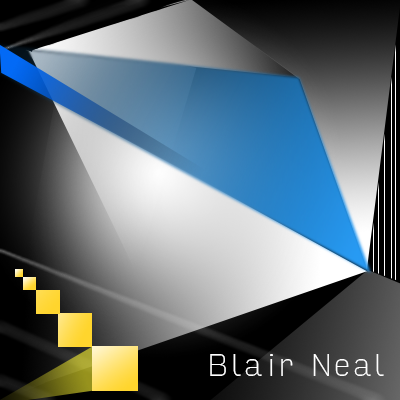21 Jul Who shares code with artists?
There has always been a slight tension between ad agencies and artists and the line between borrowing and stealing, even before all this “new media” business. Visual artists, graphic designers and animators have had their methods and styles borrowed or stolen for decades. This borrowing or stealing is nothing new, it is just new for this particular art form. The current version of this tension has been discussed in various articles and talks, notably Golan Levin’s “New Media Artists are the Unpaid R&D of Ad Agencies.”
I’ve worked at an experiential design company in Brooklyn called Fake Love for three years, and we do a lot of commercial work, as well as art works. We are a small crew of about twelve, with three in-house developers including myself. Almost every project we have done has used some degree of open source software or hardware, and we understand and appreciate open source’s role in supporting a large part of our industry and livelihood. I wouldn’t have the awesome job I have without open source artist tools – period. It’s no surprise then that we’re big into sharing as much as we reasonably can to give back to the community that helps us so much. We’re still learning how to give back in different ways, and we still have a lot to learn ourselves. Luckily, we’re not alone at all, and there are tons of amazing production companies/agencies/collectives/studios doing fantastic jobs of sharing stuff too.
Github is a website where individuals and organizations can publicly or privately collaborate on coding projects, and share the fruits of those projects with others. There are other sites that do this, but Github is the most widely used at the moment. I compiled this list of organizations that post some of their code to Github – I did this to create a resource and to highlight a list of companies posting at least a little bit of the code they work on day to day:
These sampled companies vary wildly in size from half a dozen people to large global corporations. These are also just companies that I am aware of that do something vaguely artistic with code, I did a little bit of research but it can be hard to track down exact Github pages. If someone thinks someone should be added to the list, please get in touch with me – or add your own links to this public Google Spreadsheet. You can also see a list of agencies sorted by “stars” – Github users can “star” repositories that they find useful, so it provides a bit of a metric for who is providing useful code – link here
It’s important to note that sharing code isn’t the only way to keep the community healthy. Some companies aren’t particularly good at the code sharing aspect, despite having a Github. A public Github alone doesn’t get you a “I did the right thing” pass. Some shared code is old, poorly documented, sparse, or such a niche application that it would hardly be useful to anyone else without putting more time in to figure out what it does (and if it even does it well). Let’s also be clear that sharing an entire project that you made for a client can rarely be useful to a large audience. In my experience, most projects in this realm are made on tight timelines and leave little time for proper organization and cleanup. The best parts of the project may be tucked away in a single class that would be more useful as a tool or individualized example that you break out after the fact. All this sharing step takes is a little time and planning. In addition to sharing code, as noted in Golan’s talk, it is also very important to reach out to artists, to credit them, to cite them and perhaps most useful – to pay them.
Right now, a lot of artists don’t explicitly ask for money for the creations they share – typically on good faith. Artists and agencies work in their own economies, and when the work between them overlaps there needs to be awareness of those differences. The currency of these sharing artists is time, the current of agencies is money. To support the producers of the sharing economy, they can provide citations and sometimes money. It can be rough out there for a principled artist who doesn’t do commercial work but loves to share their code and methods regardless. In a way, it’s a risk artists are taking. Their carefully crafted code built for an honest and compelling artwork can both further the field for other struggling artists, and be used in a goofy stunt to sling sugar water. Of course even if other artists use this carefully crafted code, they can make a piece of shit artwork just as easily an agency can make a piece of shit campaign. The difference is who gets paid for it, how much they got paid for it, the credits and the promotion that comes out of it. I’ve seen the budgets for some of these commercial projects, and they far eclipse the typical amounts you’ll see available for other comparable artworks. A tiny fraction of these massive budgets can be set aside to pay artists for their work.
One way artists can guide the usage of their work is by applying specific licenses to their work as a modest (and occasionally legally binding) request of “This is the way I would like my work to be used in the future.” As it is now, many of these licenses that artists apply are fairly lenient and don’t always make a distinction between their use in commercial or non-commercial work. Most just ask that you give attribution or share back what you built with the community. Of course, it may not always stay this way.
A big part of making sure this open and free environment remains open and free falls to the responsibility of the agencies, production companies, collectives, studios who are using and profiting from the code and technical developments made by independent artists. Much of the industry’s future relies on artists going through school or training to build the tools that may be used in tomorrow’s experiences – it’s likely that the artists will want to see that path as being able to provide a sustainable living. At the moment there is more money, stability and human resources available to these larger companies. Returning to the opening point – borrowing and stealing from artists has been going on for decades, but for the same amount of time organizations and individuals have also had the option to find a way to do the right thing.
————————————————–
Thanks to Kyle McDonald, Golan Levin and Dan Moore for providing input on this writeup.


